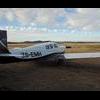LOP: A few questions.
-
Members Online
- jamesyql
- ArtVandelay
- TCC
- toto
- Ragsf15e
- jetdriven
- Tommooney
- catchman86
- TGreen
- Justin Schmidt
- Danb
- exM20K
- Utah20Gflyer
- Skyland
- mmcdaniel33
- MDMooney
- MaxwellSmart86
- FoxMike
- 201Mooniac
- philiplane
- gevertex
- kortopates
- Aaviationist
- hammdo
- ElkoRandy20J
- Buckeyechuck
- AKEllsworth
- wombat
- Ronnie Pool
- Boilermonkey
- raymondscott0321
- onegreen
- Will.iam
- JTR
- DCarlton
- Steve Dawson
- AviH
- toomany
- MikeOH
- eman1200
- joepilot
- Flyler
- Brian2034
- PT20J


Recommended Posts
Join the conversation
You can post now and register later. If you have an account, sign in now to post with your account.